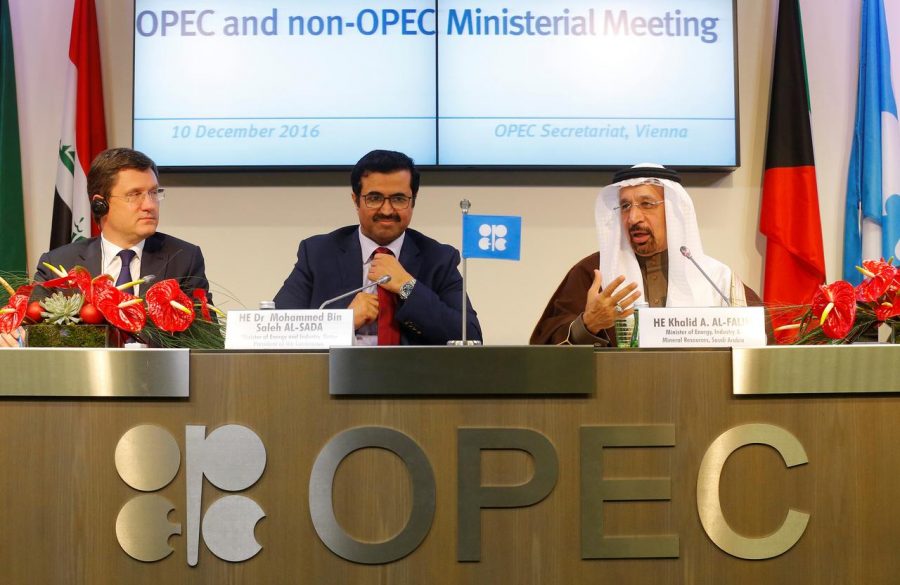The Organization petroleum exporting countries(OPEC) Secretariat has launched its Annual Statistical Bulletin (ASB) to help provide data statistics in the global oil sector.
The organisation disclosed this on its website www, opec.org.
It said that 2020 ASB provided a wide range of data on the oil and gas industry worldwide as well as key economic indicators.
The organisation noted that it would serve as an important source of reliable information for research analysts and academics as well as policymakers and industry stakeholders.
It added that the publication provided detailed and comprehensive time-series data on different aspects of the petroleum industry, including production, demand, imports and exports as well as exploration and transportation activities.
“The flagship publication also provides key statistical data on oil and natural gas activities in each of OPEC’s 13 Member Countries,’’ OPEC said
It named the countries as Algeria, Angola, Congo, Equatorial Guinea, Gabon, IR Iran, Iraq, Kuwait, Libya, Nigeria, Saudi Arabia, the UAE and Venezuela.
It noted that the publication had not only been optimised in terms of size and valuable information but also through enhancing its accompanying features such as the ASB interactive version, which had completely new and enhanced design.
According to the organisation, the ASB is also available through an in-house developed App for iOS and Android.
Dr Mohammed Barkindo, OPEC Secretary General, in his remarks emphasised that policymakers, energy analysts, academics and industry leaders have increasingly come to rely on the insights gleaned from the pages of the ASB as trusted reference tool for vital data on the global oil and gas industry.
“ Through the ASB and indeed all of its publications and communications, OPEC is dedicated to enhancing data transparency through wider dissemination of high-quality, timely oil and gas data.
“This underpins OPEC’s overarching goal of fostering sustainable oil market stability for the benefit of producers, consumers and the global economy,’’ Barkindo said.
Also, Prof. Jonas Puck, who attended the launch as special guest and sponsor of the event, also stressed the importance of reliable and comprehensive data for analysis and decision-making.
Ms Boshra AlSeiari, Head of OPEC’s Data Services Department, provided a detailed presentation of the publication’s main highlights,
“Total world crude oil production declined in 2019 by 0.56 million barrels/day (mb/d), or 0.7 per cent, as compared to 2018, to average 75.26 mb/d, following a historical high during 2018.
“OPEC crude oil production declined sharply year-on-year by 1.86 mb/d, or 6.0 per cent while crude production by non-OPEC countries grew by 1.30 mb/d, or 2.9 per cent.
“With an average of 99.67 mb/d in 2019, world oil demand grew by 0.9 per cent y-o-y, with the largest increases recorded for the Asia and Pacific region (particularly China and India), Africa and the Middle East.
“ OECD oil demand fell slightly in 2019, while oil demand in OPEC member countries returned to growth in 2019,’’ AlSeiari said.
She noted that OPEC member countries exported an average of 22.48 mb/d of crude oil in 2019, a sharp decrease of about 1.80 mb/d, or 7.4 per cent, compared to 2018.
Following the pattern of previous years, she noted that the bulk of crude oil from OPEC member countries —was exported to the Asia and Pacific region, followed by Europe.
“North America imported 1.22 mb/d of crude oil from OPEC member countries, which was about 1.41 mb/d, or 53.6 per cent, less than the 2018 volumes.
“World proven crude oil reserves stood at 1,551 billion barrels (bn b) at the end of 2019, increasing by 3.6 per cent from the level of 1,497 bn b recorded at the end of 2018.
“ Proven crude oil reserves in OPEC member countries increased by 3.7 per cent to 1,227 bn b at the end of 2019.
“World refinery capacity expands by 1.41 million barrels/calendar day (mb/cd) to stand at 100.98 mb/cd during 2019,’’ she said



